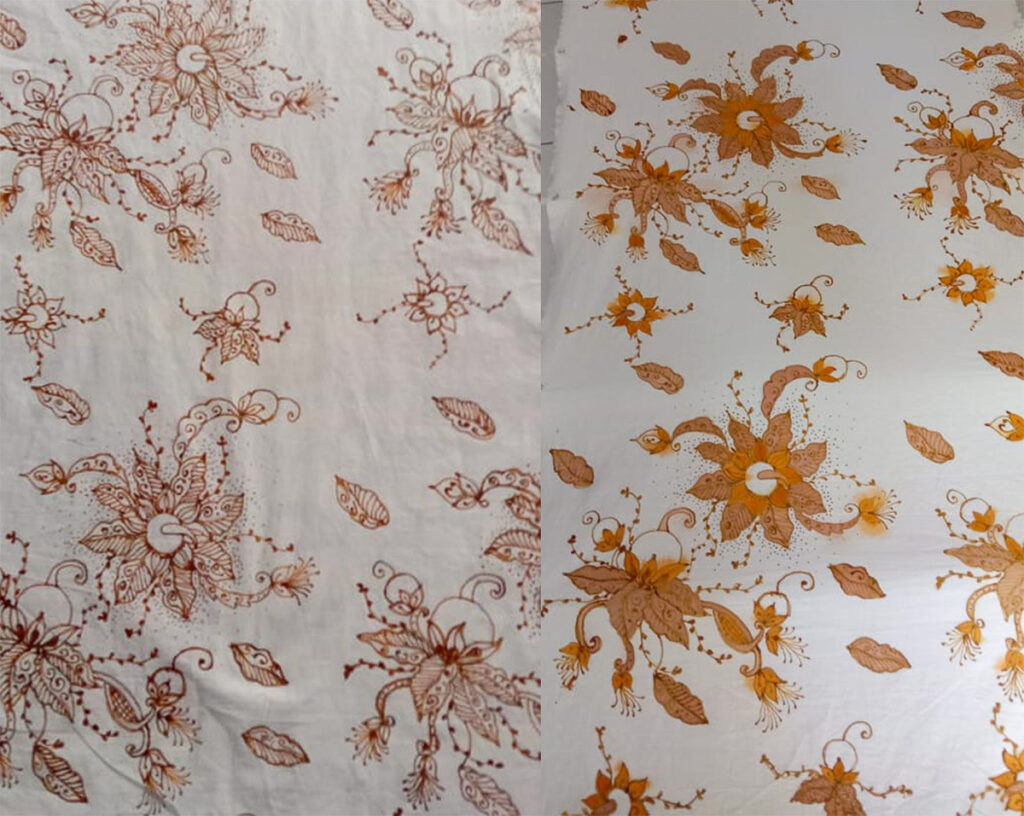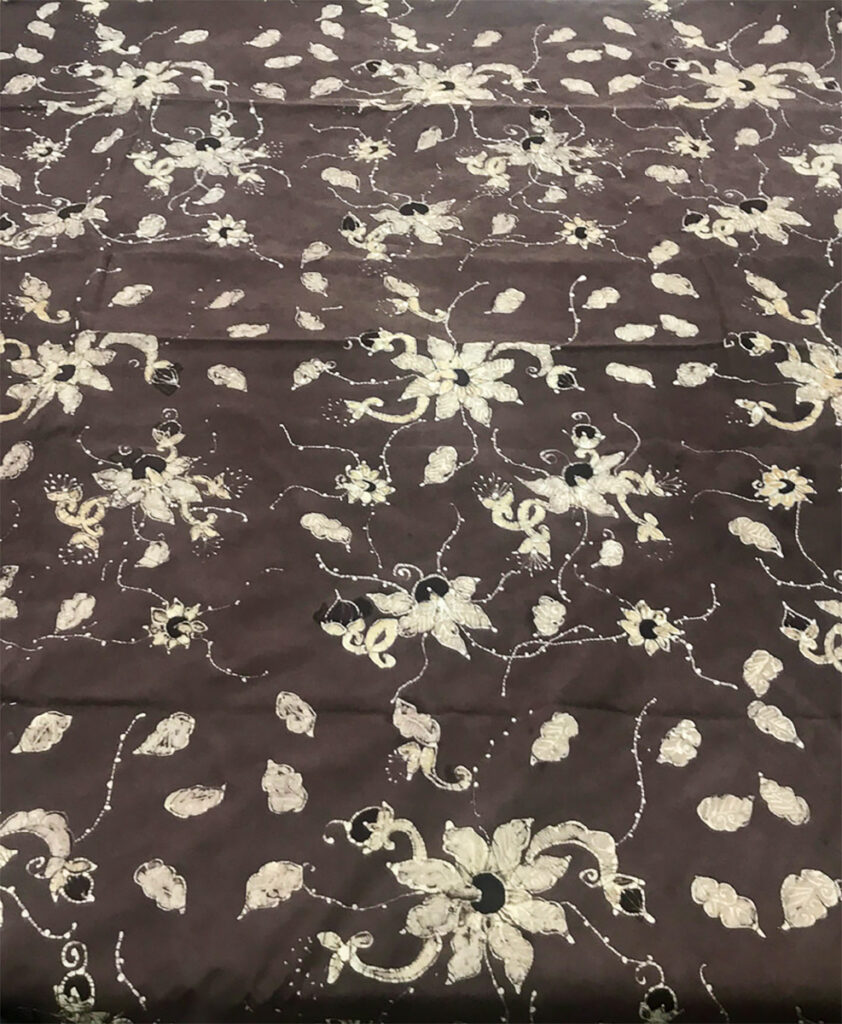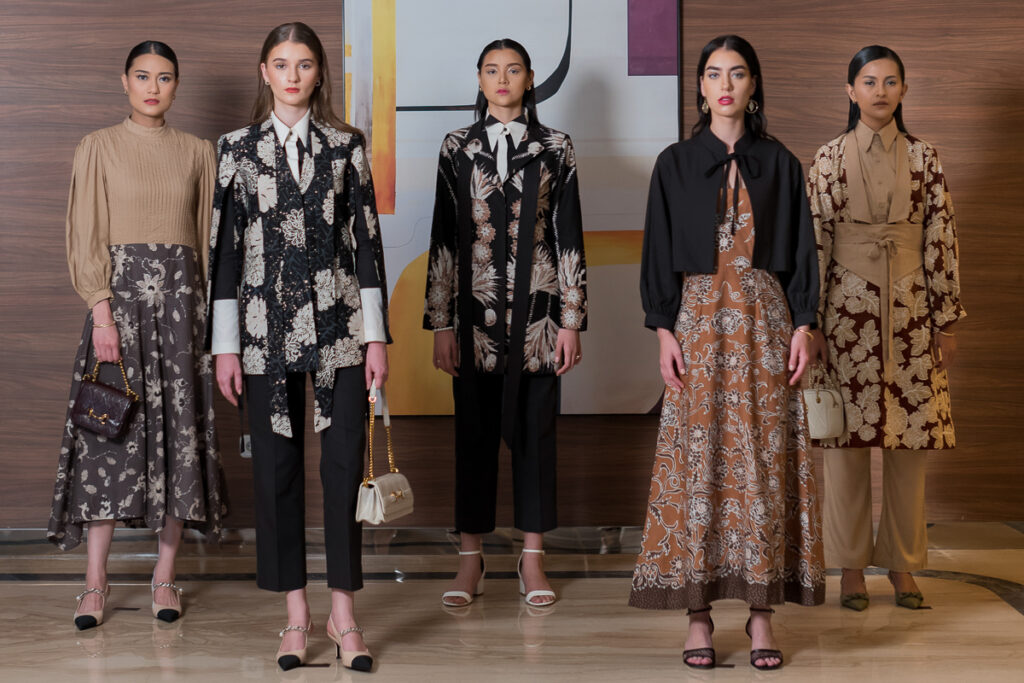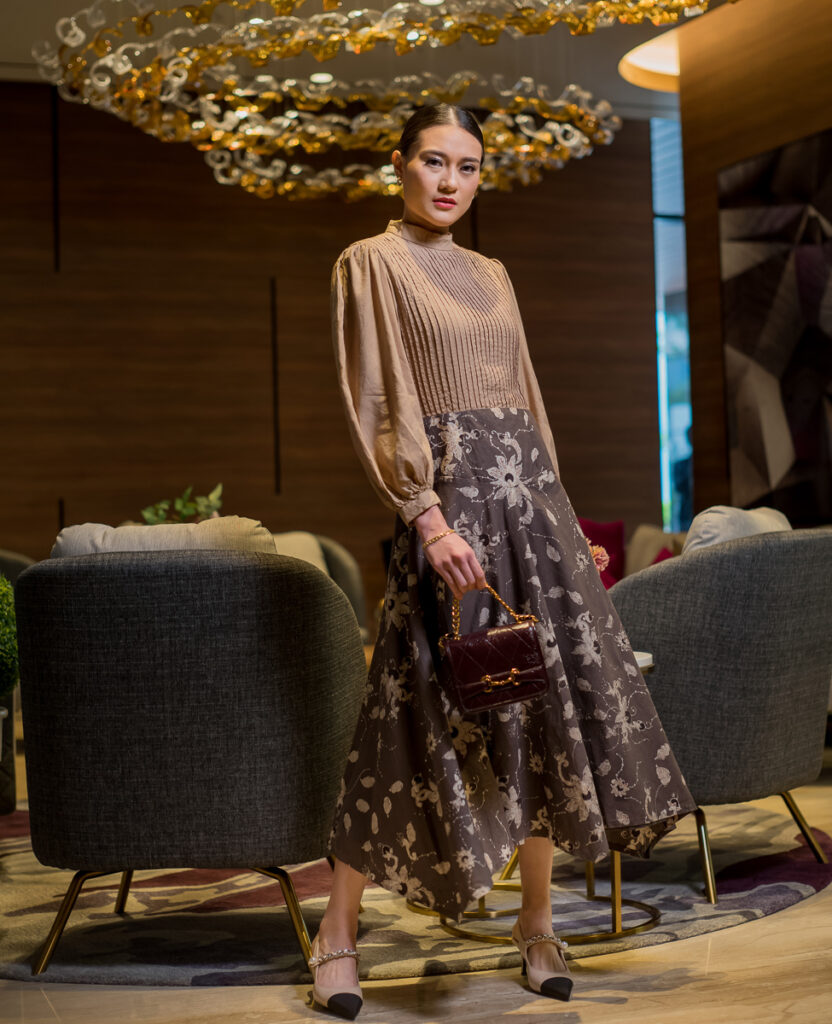Lauren Veronica Sidarsono writes from the village of the “little King” that celebrates the mangrove fruit with fashionable batik.
The beauty of Indonesian culture does not only come from similarities but also from differences, which has made Indonesia a country with a variety of different heritage and wastra (traditional textile) from Sabang to Merauke.
In East Java, Raci village is located not far from the eastern coast in Pasuruan Regency. It has a mysterious origin. The villagers believe that the birth of Raci village is closely related to the reign of Demang Danipa, who initially lived in Ngablak Village. During the Dutch colonial era, he had received patronage and was entitled to become Little King (raja kecil). The title eventually gave birth to the name Raci which symbolizes its independence. The village is famously abundant in natural resources and located close to the sea, making most of the area consist of rice fields and aquaculture, surrounded by fresh air. Raci Village also has plenty of plants and fresh local fruits, delivering an inspiring environment for residents such as fishermen, pond farmers, and craft artisans who make local products from the natural resources around the village.
Raci Village in Bangil sub-district is one of the villages with less area of mangrove trees or bogem type, however, the soil of the village is quite fertile. Various types of plants often grow around residential areas, one of which is the Mangrove Apple (Sonneratia Caseolaris) known as red pedada fruit, what locals usually call bogem fruit. This plant generally has a height of up to 15 meters and grows in the less salty area of mangrove forests along small rivers where water flows slowly and is affected by tides. As for the villagers, these plants have an extensive role in the surrounding environment by utilizing their roots and trunks to protect coastal areas from abrasion. In addition, the local fishermen benefit from the sustainable mangrove forest because they can capture fish not far from the beach and sell it to visitors. For that reason, this mangrove plant has a valuable and principal role in the lives of the surrounding community, where it has become a source of cultural heritage for them. But unfortunately, the wisdom of the Mangrove Apple is getting limited from time to time, making some of the younger generations in Raci Village unfamiliar with the existence of this fruit.
This situation has motivated Raci Village native Abd Nasech with his team: Sukanto, Taslimah, Anita Kusumaningsih, Isnaini Rodiyah, and Faras Salsabila Firdaus as batik artisans who lived in Pasuruan Regency were the beneficiaries of Australian Alumni Grant Scheme project. They have been selected during the curation session to create and promote Mangrove Apple into the art of beautifully handmade batik tulis motif design. The Mangrove Apple batik motif design has developed to raise awareness of Raci Village origin culture with its historical symbol of strength and unity. In the creation process, artisans tried to draw inspiration from the shape of the Mangrove Apple and arrange it into broad motifs to get the wearable design, not only by depicting a similar silhouette but added a few batik elements related to the mangrove forest.
- The Mangrove Apple batik during canting and colet process.
- Mangrove Apple Batik Motif Design by Abd Nasech with his team: Sukanto, Taslimah, Isnaini Rodiyah, Faras Salsabila Firdaus and Anita Kusumaningsih.
Furthermore, the batik motif design combined with muted earth tones follows the preferences of the Australian market. It uses only natural dyes from local fruits or plants such as Tegeran woods, Myrobalan tannin, and Manjakani tannin to achieve yellow, black, and reddish-brown colors to promote the importance of sustainable movement. According to artisans, natural dyes also can create uniqueness and originality in handmade batik tulis because of the complexity of natural dyes composition and expertise of the batik artisans. It takes approximately three months to make one natural dyed handmade batik tulis on two meters of fabric. The process has made batik highly valued nationally and globally.
Eventually, the artisans deliver the Mangrove Apple natural dyes handmade batik to Allegra Jane, the Indonesian fashion brand with a sustainable concept owned by Janet Teowarang, the grantee of the Australia Alumni Grant Scheme Round 1 2021. For the project work plan, Allegra Jane has collaborated with selected Universitas Ciputra Fashion Product Design students and created a sustainable fashion collection by using beneficiaries’ natural dyes and handmade batik cloths. The collection design is practically inspired by the minimalist living in Australia with a young, multicultural and open country dynamic, revealing the quality of life and natural beauty.
I was one of the students selected to collaborate with Allegra Jane to design one look for the sustainable fashion collection with the Mangrove Apple batik. I have designed a versatile midi dress with a semi-asymmetrical skirt using flare and volume elements, tuck-texture details on the chest, semi-puff silhouette on the sleeves. In the sustainable fashion collection, Allegra Jane has combined the natural dyes of handmade batik with incorporating textiles from TENCEL™ fibre for durable and environmentally friendly materials.
- One look from sustainable fashion collection designed by Lauren Veronica Sidarsono collaborating with Allegra Jane.
The sustainable fashion collection gained the opportunity to be showcased at the PayPal Melbourne Fashion Festival Independent Event 2022 to promote women’s empowerment of Pasuruan Regency batik artisans and Indonesian sustainable fashion. Last not least, I truly valued the long process after nine month’s experience, this has helped me learn many things about the important role of small rural communities in Indonesia and embraced the local culture. The experiences have also given me a sense of appreciation to continue learning and exploring existing culture from the community’s daily life and the great influence of nature on our environment. The aspiration for telling stories about localism to the world also arises with the hope of bringing meaningful sustainability.
About Lauren Veronica Sidarsono
 Lauren Veronica Sidarsono is a creative and innovative fashion designer specializing in fashion design and illustration. She is a third-year Fashion Product Design and Business student at Universitas Ciputra Surabaya. She has a passion for promoting excellent textiles, Indonesian wastra, creating fashion design with a focus on the production process and consumer trends for sustainable fashion.
Lauren Veronica Sidarsono is a creative and innovative fashion designer specializing in fashion design and illustration. She is a third-year Fashion Product Design and Business student at Universitas Ciputra Surabaya. She has a passion for promoting excellent textiles, Indonesian wastra, creating fashion design with a focus on the production process and consumer trends for sustainable fashion.






